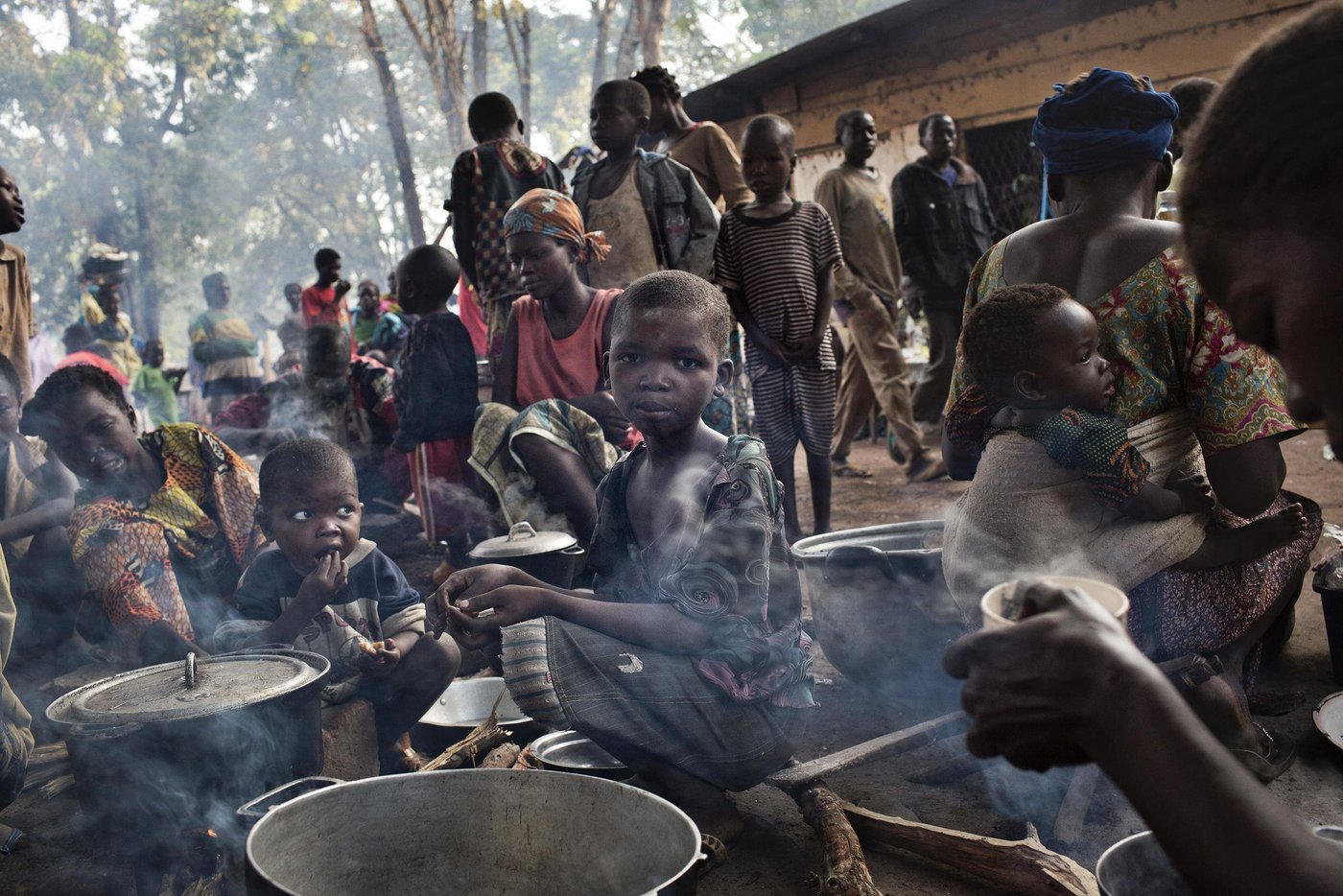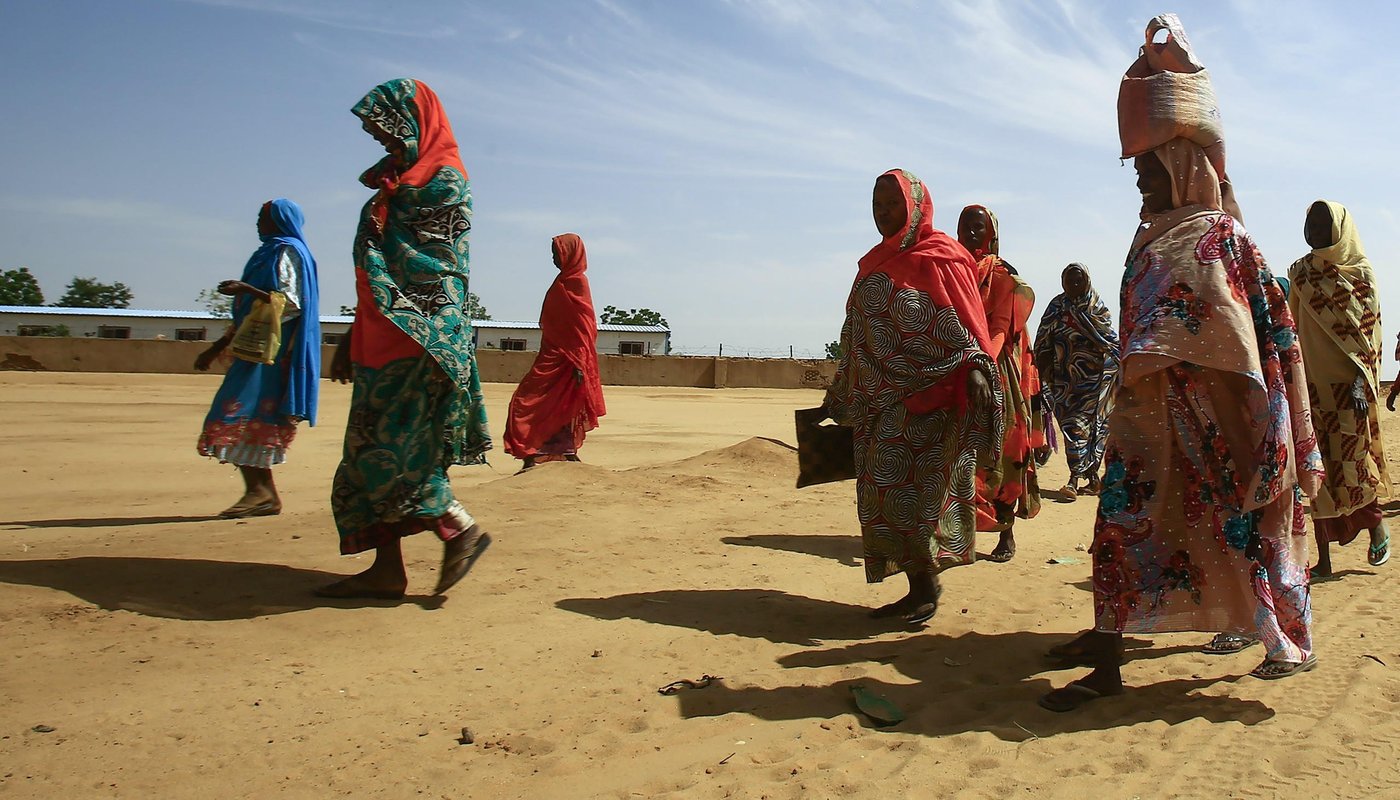
It is about crises where people have had to flee their homes because of war and persecution, and who do not receive sufficient humanitarian assistance to meet their needs. In addition, these crises do not receive the necessary media attention, nor the necessary political attention for there to be any real hope of imminent change in the situation.
All countries with more than 100,000 displaced people have been analysed, and the list is based on the following three criteria:
THE CENTRAL AFRICAN REPUBLIC (CAR)
The international community has chronically neglected the needs of the civilian population in CAR. In 2016, only 38 per cent of the Humanitarian Response Plan was funded. Despite generous promises from donors to support the National Recovery Plan, tangible projects related to this plan are yet to materialise.
Less than two years after the United Nations downgraded the humanitarian situation in CAR from its highest alert level, the humanitarian community is now discussing if it should be raised again given the sharp increase in violence and displacement.
International efforts in the country have been inconsistent, with insufficient and ebbing aid. The humanitarian situation in CAR generally receives little attention in international media.
After decades of strife and stalled development, CAR plunged into crisis in 2013. The Seleka coalition overthrew the president in a coup d’etat. In response, self-defence groups known as Anti-Balaka reorganised in late 2013 to challenge the Seleka. The Anti-Balaka and the Seleka are both responsible for massacres, executions, sexual violence, torture, and widespread looting and destruction of property. The crisis escalated until fighting left 1,000 people dead in Bangui in December 2013. A cease-fire was later reached, followed by a national reconciliation forum in 2015. In early 2016, elections were held, bringing a relatively peaceful end to the transition period.
Starting in late 2016, however, the security situation deteriorated in multiple regions. The United Nations Office for the Coordination of Humanitarian Affairs (OCHA) estimates that the number of people internally displaced will exceed 500,000 by mid 2017. The number of refugees in neighbouring countries is over 460,000. This means that one in five Central Africans are displaced from their homes, often living under dire conditions.
Forty-eight per cent of the population face food insecurity, eating only one meal per day. Only 35 per cent of Central Africans have access to clean water, and even less, 27 per cent, to basic sanitation. For the third consecutive year, CAR is at the bottom of the UN Human Development Index, placed as number 188 out of 188 countries.

DEMOCRATIC REPUBLIC OF THE CONGO (DRC)
Following over 20 years of conflict in DRC, there is no prospect of an end to the violence. In May 2017, the United Nations warned that the humanitarian situation in the country was deteriorating dramatically, as both the number of displaced people and areas affected by conflict increased radically.
More than 900,000 were forced to flee in DRC during 2016. No other country in the world has seen a higher number of new internal displacements over the year. Despite the high numbers of killed and displaced people, the crisis in DRC receives little attention in international media. One reason may be that the long-lasting crisis has lost its news value. One result is that humanitarian organisations do not receive the funding needed to fulfil their lifesaving mandate. In 2016, only 60 per cent of the funding needed for the humanitarian response was covered.
The international political interest in DRC is also decreasing. Even though UN’s largest peacekeeping force, MONUSCO, has failed to stabilise the eastern region, it has decided to reduce its capacity. The peace and security framework agreement, signed by DRC and several neighbouring countries in 2013, has not yet been followed up.
Two decades of conflict has led to enormous suffering, stagnation of the country’s development, and widespread poverty. 7.3 million Congolese people - 10 per cent of the country’s population - need humanitarian aid, whilst the country is neglected by the international community.

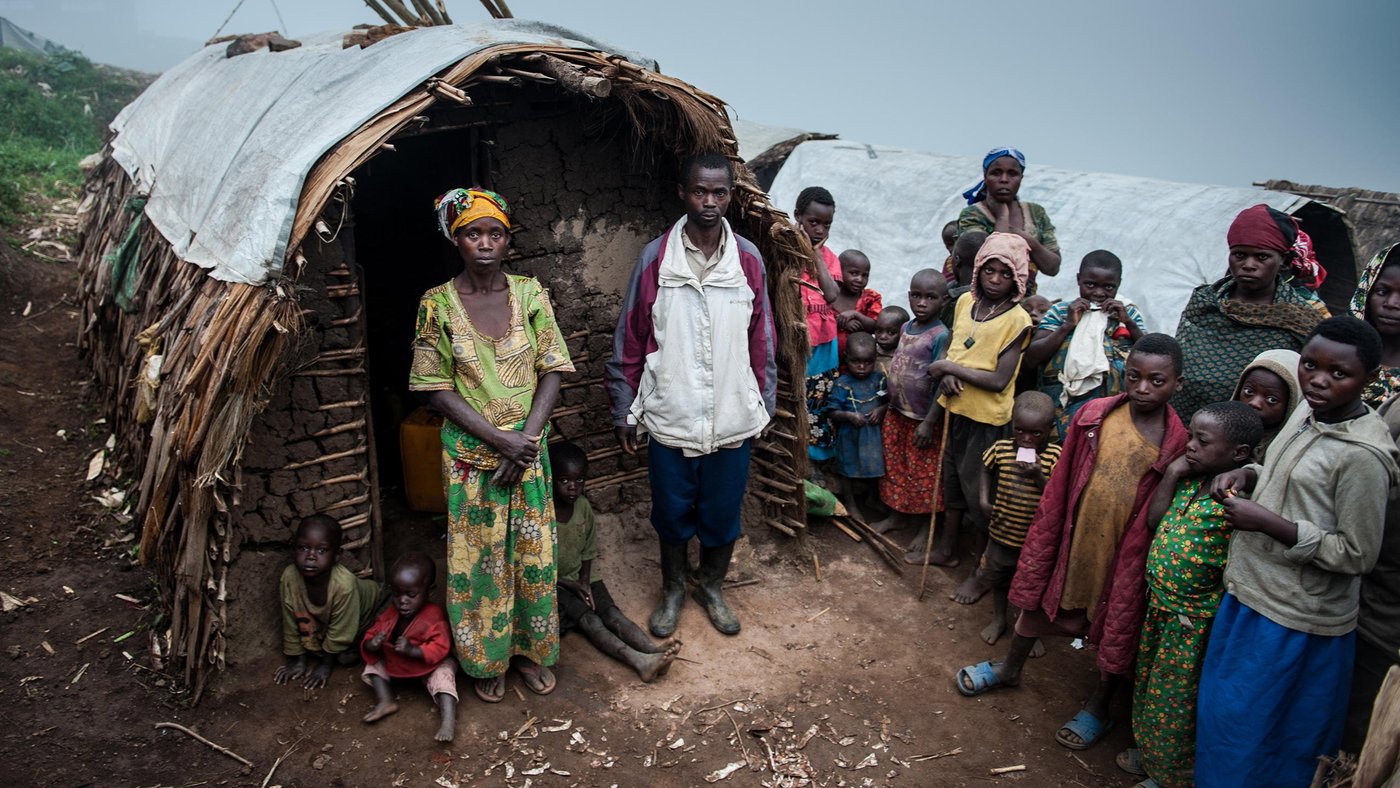
SUDAN
Years of armed conflict continues to worsen the humanitarian situation in Sudan. In the early 2000s, the now 14-year-long conflict in Darfur made it to political agendas and into worldwide headlines for only a short period.
In recent years, the conflict has received very little attention, although 3 million out of almost 5 million people who depend on humanitarian aid in Sudan live in Darfur. Displacement peaked in January 2016 when 190,000 people fled from their homes because of fighting between government soldiers and armed groups.
Hundreds of thousands of people do not receive the lifesaving help they need because of challenges in accessing communities, a 40 per cent shortage in funding and a lack of international media attention to the crisis. Lack of data from several areas also means that the extent of people’s needs remains unknown.
The authorities continue to block access for UNAMID, the AU and UN peacekeeping force, which undermines ability of the forces to protect civilians. UNAMID’s mandate has been renewed until June 2017.
Even in the southern states of South Kordofan and the Blue Nile, violence drives people to flee, despite President Omar al-Bashir’s declaration of a unilateral ceasefire in June 2016.
One of the main causes of conflict in Sudan is the dominance of the Arab-speaking North and the consequent marginalisation of other groups. Several of Sudan’s conflicts are prolonged and the population is worn out by conflict. Parts of Sudan is also severely affected by food shortages and malnutrition, because of harsh weather conditions and unpredictable rainfall.


SOUTH SUDAN
On 20 February 2017, UN declared famine in parts of South Sudan, the world’s youngest nation. Almost half of the country’s population is in need of humanitarian assistance. However, the crisis in South Sudan has gained little media attention and is among the neglected crises with the lowest media coverage per displaced person.
The civil war in South Sudan is in its fourth year and has triggered waves of refugees fleeing the country. After the conflict escalated in 2016, the situation for the civilian population has deteriorated further.
The famine in South Sudan is a man-made disaster resulting from war, violence and terror. In many agricultural areas, insecurity prevents people from cultivating their soil. Those with cattle lose their stock and cannot access pastures. People are also prevented from accessing waters for fishing.
The poor security situation is making it difficult for the humanitarian community to access people in need. The country’s president, Salva Kiir, and the country’s authorities, have been criticised for not doing enough to help their own population and prevent famine.

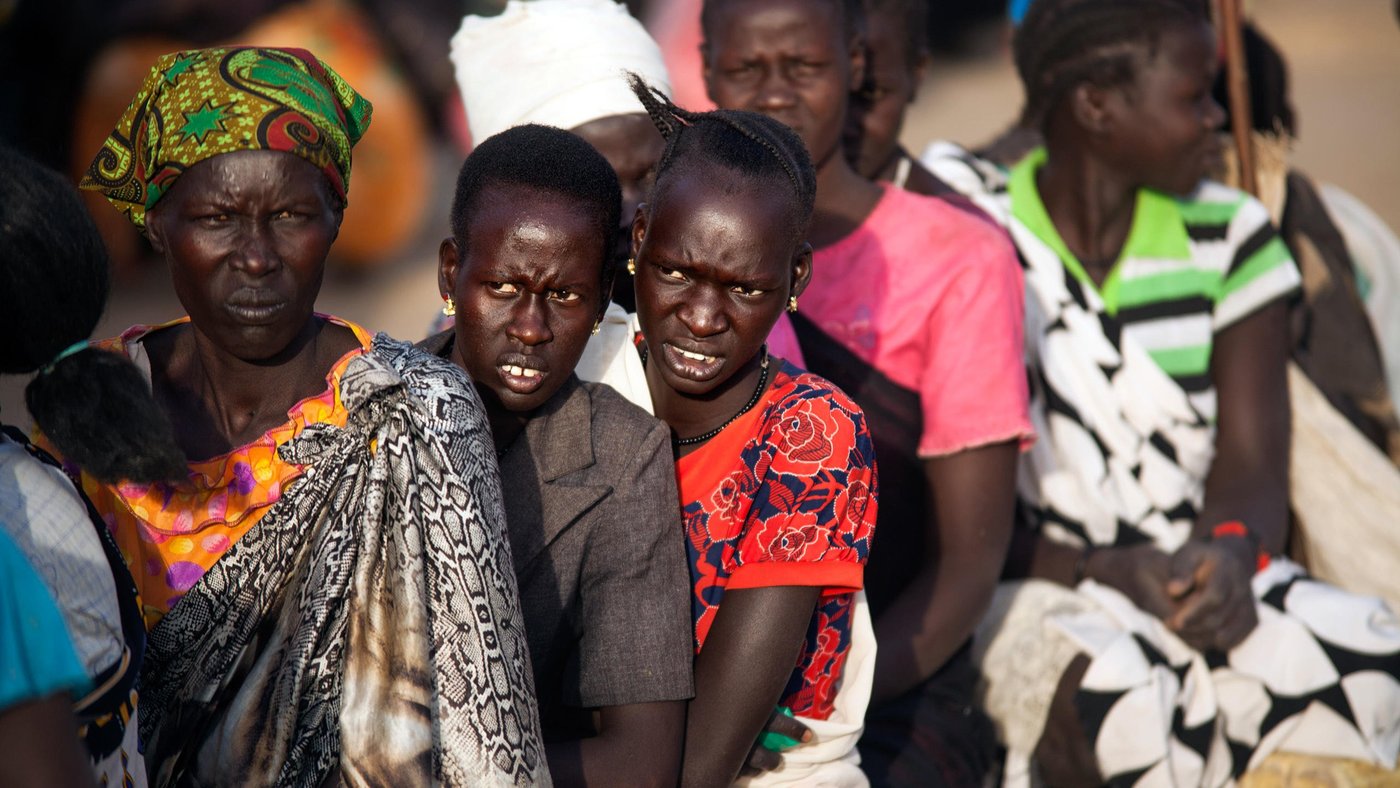
NIGERIA
More than 2 million people have been forced to flee because of fighting between the armed group Boko Haram and government forces in northeast Nigeria. In addition, the population is affected by serious food short-ages. Some 750,000 children under 5 years are suffering from severe malnutrition and
6 million people risk going to bed hungry.
Despite the high number of displaced people and the fact that Nigeria is among the neglected crises with the highest media coverage per displaced individual, only half of the humanitarian appeal was covered in 2016.
Nigerian authorities have not allocated adequate resources to relief work in the poor and conflict-torn north eastern region, and the national army has been unable to ensure protection and safety for civilians. In addition to the two million people who have fled their homes, three million people still live in areas where Boko Haram operates.
The number of aid organisations delivering aid in these areas has increased in recent years, but they struggle to reach affected communities because of the ongoing violence. A lack of funding makes it even harder to reach families who are in need of aid.

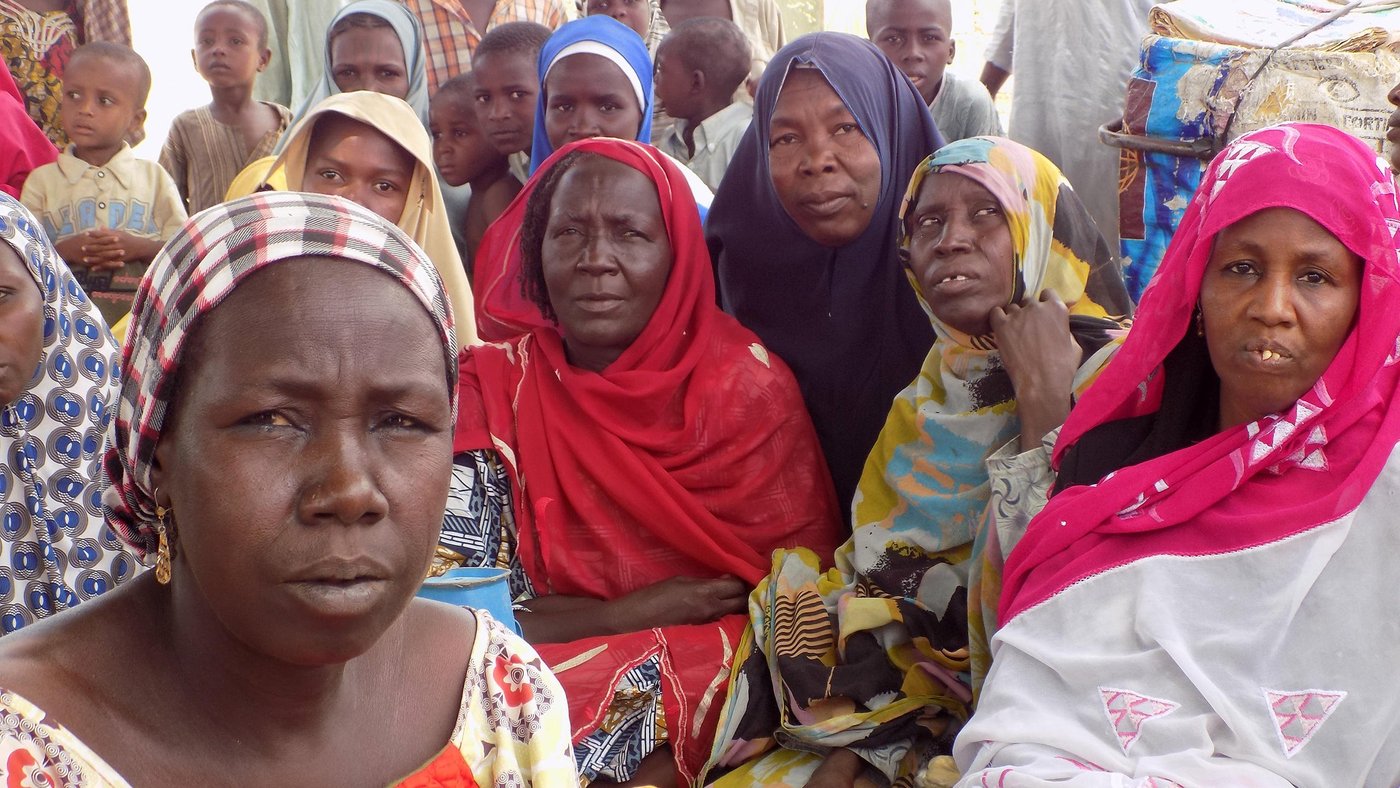
YEMEN
Yemen is one of the world’s worst humanitarian crises. Some 19 million people, or 70 per cent of the population, depend on humanitarian assistance to survive. Yet Yemen receives little attention from the international community.
All members of the United Nations Security Council formally agree that the conflict cannot be resolved through military means, but must be addressed through negotiations.
Despite this, political ties make it difficult for the Council to cope with the crisis. Members of the Council have been cautious about taking stands that could jeopardise their foreign relations, especially with Saudi Arabia. Saudi Arabia has opposed all schemes that could have led to a breakthrough in the negotiations related to Yemen.
In addition, one of the members of the Council, Egypt, is part of the coalition fighting on Saudi Arabia’s side in the Yemen war. Russia has in some cases contributed to more balanced dealings in the Council, but this has often come as a response to criticism of Russia’s role in Syria.
For various reasons, it is difficult for international media to access Yemen to cover the unfolding crisis. This is because the parties to the conflict often deliberately oppose independent coverage of the conflict, the security situation is fragile, and because roads, ports and routes into the country are closed. This last point means that it is also difficult for Yemenis to flee and explains why we have not yet witnessed waves of refugees fleeing the country.
The humanitarian crisis in Yemen has grown dramatically in recent years, but is not new. Already before this last ongoing crisis, Yemen was the poorest country in the Arab Region, but now the lack of protection, food, water and medicine is acute.

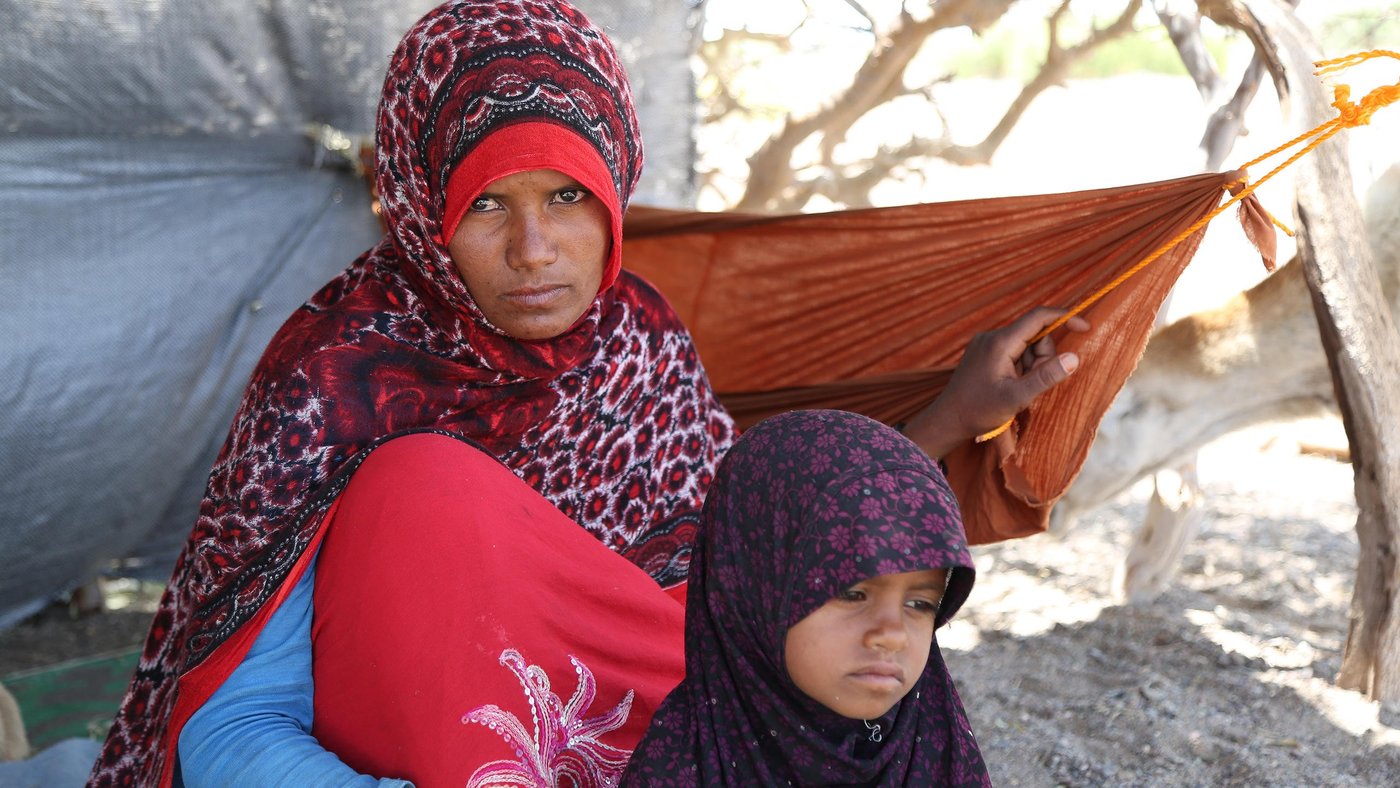
PALESTINE
Almost 70 years have passed since the establishment of the Israeli state and the 1948 war. This was the start of a continuing conflict that has forced millions of Palestinians to flee their homes.
In 1948, the Israeli government decided that none of the Palestinian refugees should be allowed to return home, a position they have held ever since. The international community has never been close to finding a political solution to the Palestinian refugee problem, partly because of Israel’s categorical line on the return issue. This has contributed to one of the world’s most prolonged and neglected refugee crises.
Today, more than five million Palestinians live as displaced people, more than one million of them in Gaza. Palestinians also continue being displaced from the occupied West Bank because of new Israeli settlements and demolition of Palestinian homes. Despite the fact that the scale of the crisis has grown over the last 70 years, the attention it receives has declined.
The military operation in Gaza in the summer of 2014 led to massive destruction, conflict and isolation. It forced 80 per cent of the population to depend fully on international aid. Nevertheless, only half of the funding for essential aid work in 2016 was forthcoming.

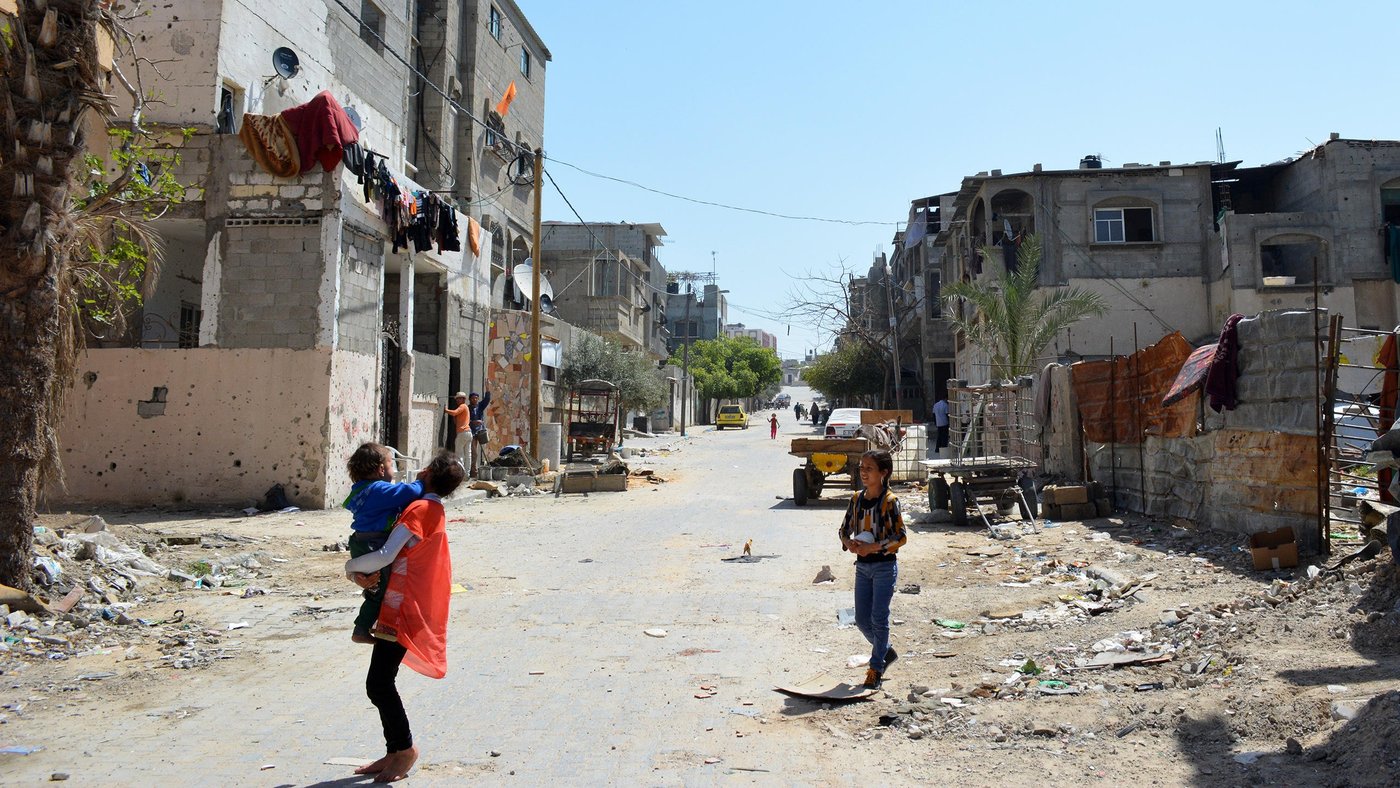
UKRAINE
Three years after armed conflict erupted in Eastern Ukraine, there are still no signs of a solution to the situation, and the risk of a long-term displacement crisis is looming.
Since the conflict started in March 2014, more than 9,900 people have been killed, including 2,000 civilians. In addition, 23,246 people have been injured.
Several ceasefire agreements have been negotiated over the past three years, but none of them have established lasting peace.
About 4.4 million people have been affected by the armed conflict, of whom 3.8 million need humanitarian aid.
The conflict has led to significant needs for humanitarian assistance for both those displaced and others. In many communities affected by violence, especially in the frontline areas, people lack access to basic services.
International aid efforts to meet humanitarian needs in Ukraine have received very little support. In 2016, only 33 per cent of the funds requested through UN humanitarian appeals were met.

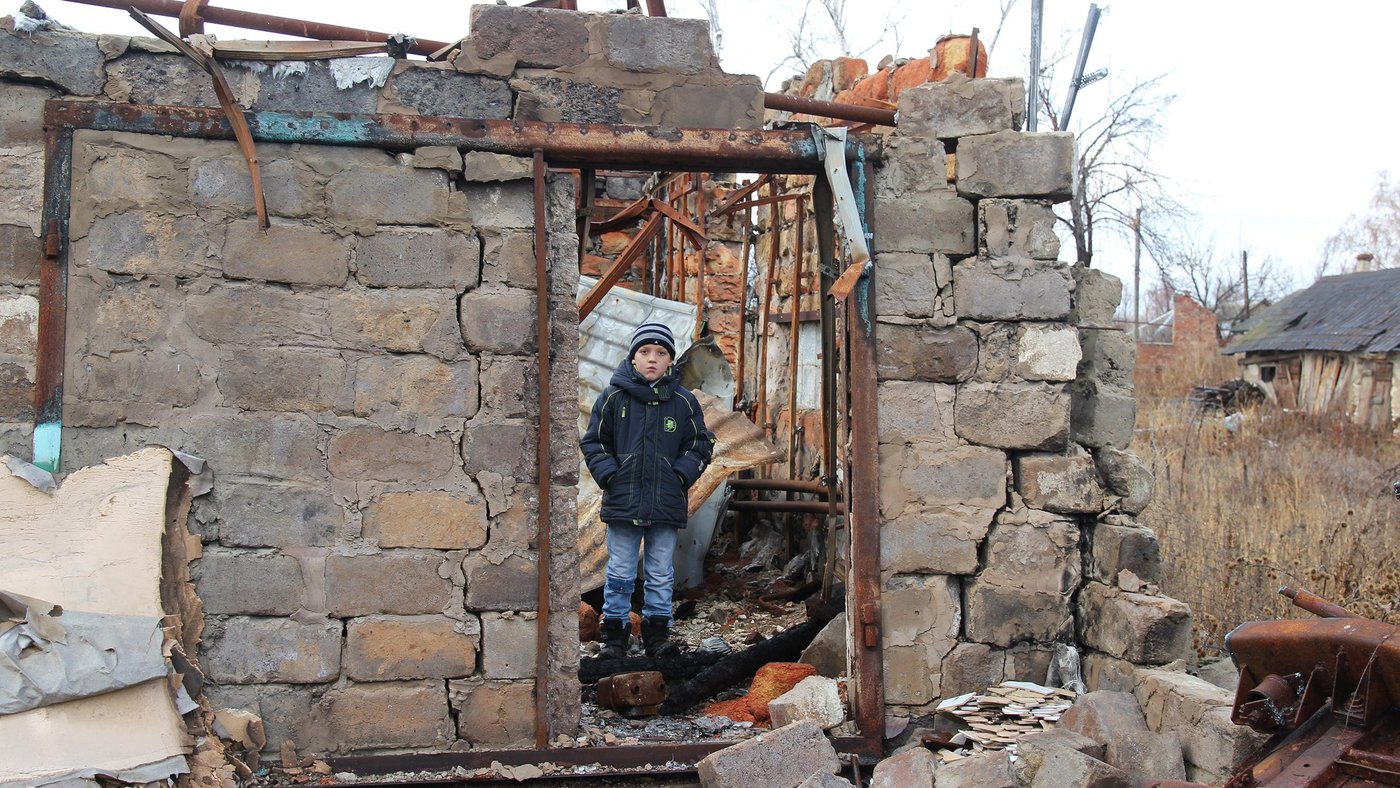
MYANMAR
Ethnic minority groups in Myanmar have been in conflict with the military and government authorities for decades, some of them since the country became independent from the United Kingdom in 1948. Hundreds of thousands of people have been driven from their homes as a result of conflicts, which are mostly rooted in minorities' demands for equal rights, access to land and resources, and greater autonomy.
In Rakhine State in the northwest of the country, there are long-standing tensions between the Muslim minority who identify themselves as Rohingya on one side, and the Buddhist community on the other. Myanmar has been criticized for depriving the people of citizenship and fundamental rights. Over 1million Rohingya in Myanmar do not have access to sufficient healthcare and education, their freedom of movement is limited, and around 120,000 remain in IDP camps. The UN refers to the group as the world's most oppressed minority.
In late 2016, the conflict in Rakhine gained international attention when 90,000 people were forced to flee their homes. The UN's desire to investigate possible human rights violations committed against the Muslim minority has repeatedly been rejected by the authorities.
Ongoing fighting in the states of Kachin and Shan in the north and east of the country, called the "forgotten conflict", has left whole villages in ruins. Violence also escalated in these areas during 2016. In southeastern Myanmar, an estimated 400,000 people remain displaced after decades of conflict, and another 100,000 remain in camps in Thailand.

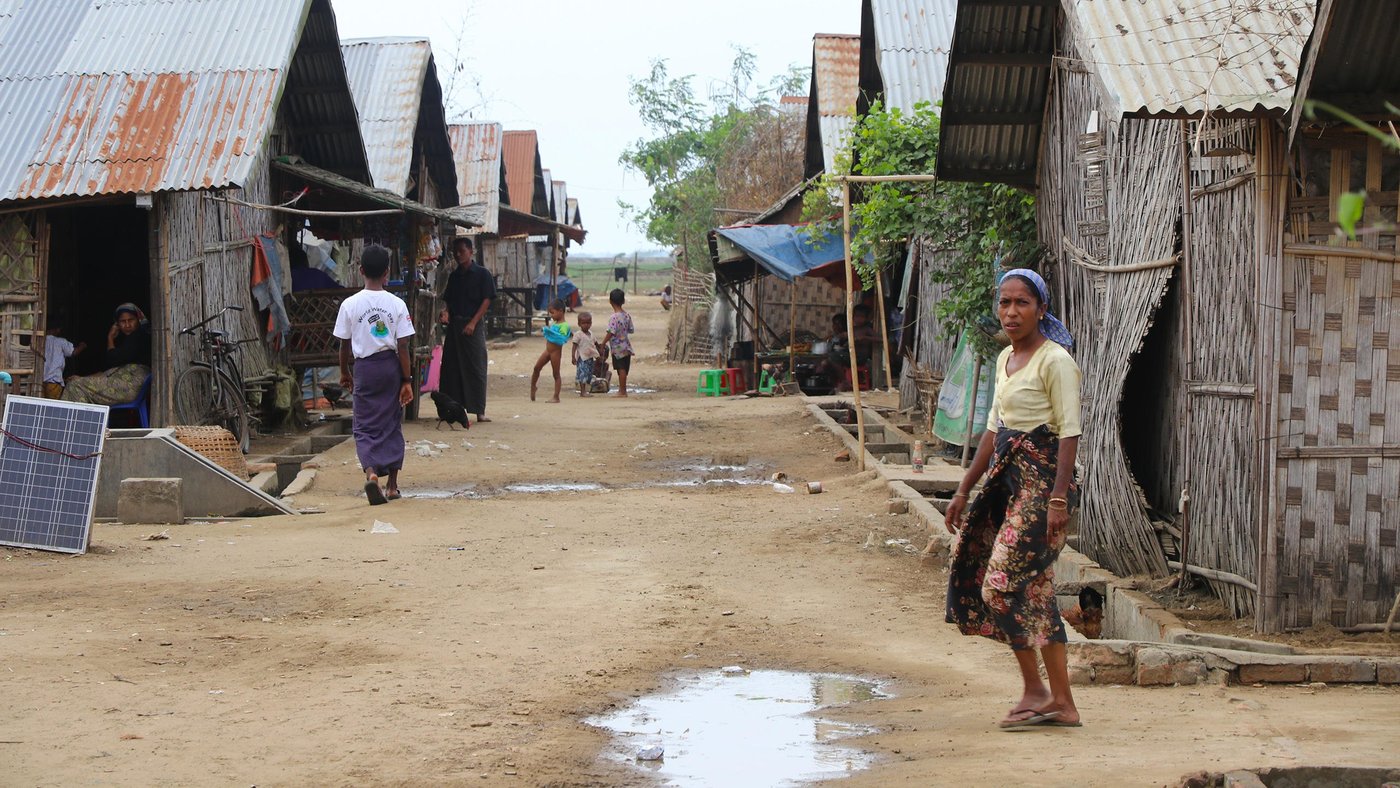
SOMALIA
Somalia has been hit by the worst drought in 20 years, and half of the country's 6.2 million people rely on humanitarian assistance to survive. The country may face famine if the rains fail again this coming season, and if vital emergency relief fails to reach the hardest affected areas.
Since November 2016, drought has driven almost 700,000 Somalis to flee their homes, which means that more than 3,000 people flee every day. Contributions from the international community are still insufficient to cope with the crisis. In 2016, the humanitarian community received just over half of the funds requested to respond to the needs.
The drought has already led to a food crisis affecting almost 3 million people and it is expected that 1.4 million children will need treatment for acute malnutrition during 2017.
Hunger, lack of access to clean drinking water, and disease, are increasingly taking lives in Somalia. Cholera is now present in 11 out of the countries' 18 regions.
Somalia is one of the most challenging countries in the world for relief organisations to work in. The security situation is unstable and the armed group Al Shabaab still controls parts of the country. At the same time, there are indications of positive political development following the election of a new president and a new prime minister early this year.


Download .pdf version of the 2016 list
* The number of displaced people is based on IDMC’s figures for Internal Displacement by conflict at the end of 2016, UNHCR’s figures for refugees mid-year 2016, and UNRWA’s figures for Palestinian refugees.


